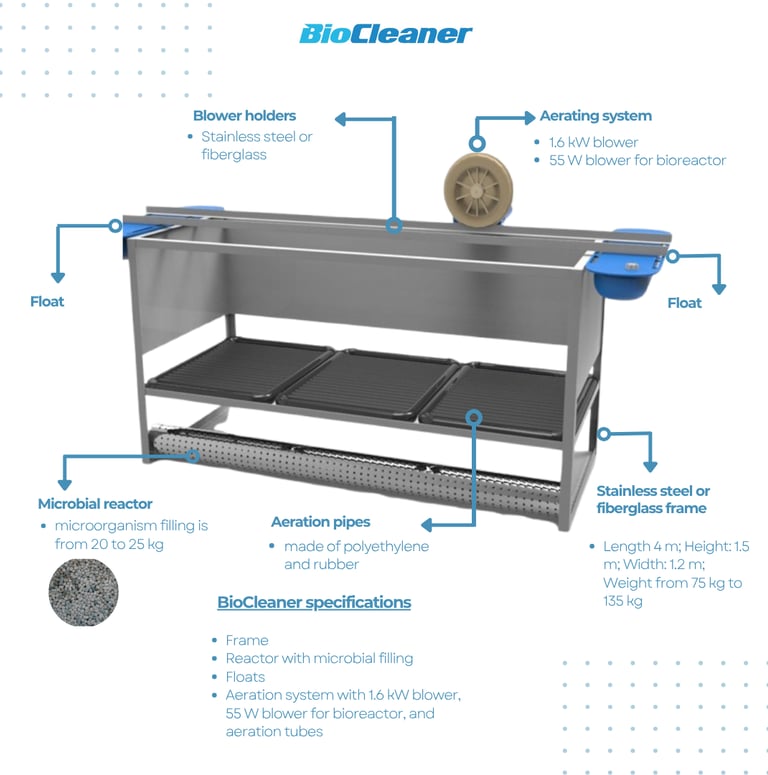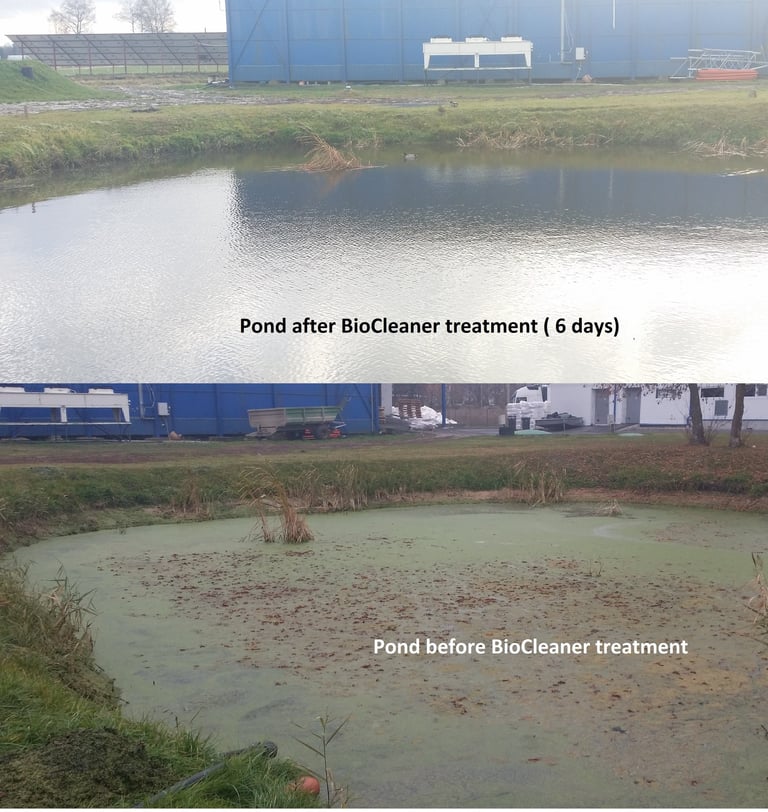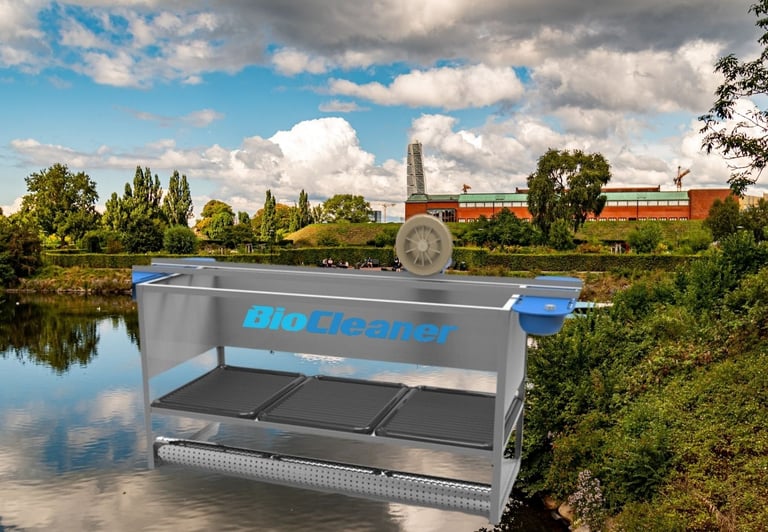
Floating BioCleaner
What is a floating BioCleaner ?
The BioCleaner may seem simple, but there are decades of research behind it. An innovative immobilised consortium of microbes based on the biology of geobacteria allows for a level of efficiency in the treatment of wastewater and waste that was previously unimaginable. It is a technology that could replace conventional methods of treating organic waste.


How does the Floating BioCleaner work?
Natural microflora - The BioCleaner uses facultative, anaerobic, non-pathogenic microflora that works under both aerobic and anaerobic conditions;
Reduced energy consumption - the combination of anaerobic and aerobic stages reduces the need for aeration by more than 50% and makes anaerobic reactors redundant, reducing capital costs;
Sludge reduction - the microbes used in the technology liquefy the bacterial sludge, reducing the need for disposal by up to 90%;
Natural nitrogen balance - the liquefied sludge increases nitrogen concentrations, eliminating the need for additional nitrogen supply, which is particularly beneficial for industrial wastewater;
High treatment efficiency - the combination of anaerobic-aerobic treatment reduces biodegradable pollutants: COD by more than 90% and BOD by more than 95%, making it suitable for wastewater from a wide range of industries;
Odour elimination - the liquefaction of the sludge completely eliminates unpleasant odours from the treatment plant and the treated effluent;
Nutrient removal - the technology enables efficient removal of nitrogen and phosphorus, ensuring safe discharge to natural water bodies;
Resistance to disturbance - immobilised microbes can regenerate and stabilise the process after adverse conditions.


Why is BioCleaner effective?
Significantly less sludge: the micro-organisms consume organic matter, leaving less waste;
Odour control: eliminates hydrogen sulphide (H₂S), which causes unpleasant odours;
Low operating costs: uses minimal electricity and requires no chemical additives;
Easy installation: can be integrated into existing wastewater treatment systems with minimal modifications;
Wide range of applications: suitable for urban wastewater treatment plants as well as for industrial plants (especially in the dairy, meat processing and fishery sectors) and livestock farms that face complex organic waste treatment tasks.
· Need more information




